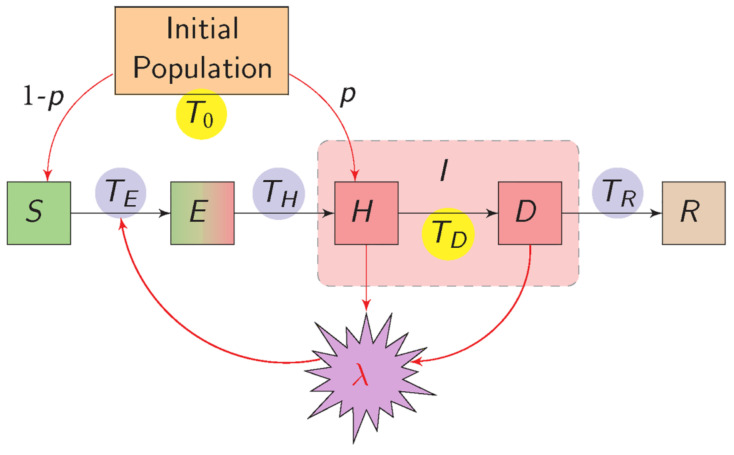Figure 6.
Susceptible-Exposed-Hidden-Detected-Removed (SEIR) model of disease progress in a fragmented landscape, Pleydell et al. 2018 [171], (Figure 1). The landscape consists of a set of patches across which vector dispersal allows for the spread of a virus. At time T0, a patch consists of infectious (I) or susceptible (S) host plants with probabilities p and 1-p, respectively. An individual plant moves between the compartments exposed (E), infectious (H), detected (D), and removed (R) at successive times TE, TH, TD and TR. Infection of susceptible host plants occurs at rate λ. Dispersal among patches (connectivity across all patches in the landscape) is modelled by a 2-dimensional dispersal kernel.

